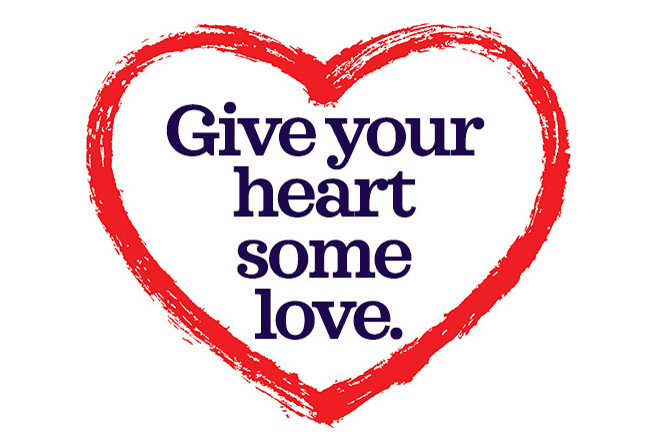WEAR RED TO OUR ZOOM MEETING!
South Jersey Dream Center—143 lbs.
Angels Community Outreach—$215, $56 in kind, 70 lbs. (Please leave clothing donations at 1206 Parkland Commons, WD; text Chris at 609-970-8795.)
Seeds of Hope will be starting the lunch program again soon. No time frame given.
GWCM—Nancy B. is collecting NEW hats and gloves for the Colonial Manor food Pantry. Place in the contact-free green container on her front covered porch anytime.
American Heart Month
We observe American Heart Month every February because every year more than 600,000 Americans die from heart disease. It’s the number one cause of deaths for most groups and affects all ages, genders, and ethnicities.
According to the American Heart Month Timeline, Egyptian mummies, some more than 3,500 years old, show signs of cardiovascular disease, proving that heart disease isn’t an entirely modern phenomenon. Researchers speculate that the high-fat diet and sedentary lifestyle of upper-class Egyptians may have contributed to poor health.
In 1924, several heart disease research groups formed the American Heart Association, hoping to coordinate and promote efforts to treat heart disease.
In the 1950s, doctors began to understand cholesterol and the role of low-fat diet in heart health. In May 1967 the first bypass surgery was performed at the Cleveland Clinic, and in December of that year, the first heart transplant in Cape Town, South Africa.
Symptoms: angina (dull and heavy or sharp chest pain or discomfort, pain in the neck, jaw or throat, pain in the upper abdomen or back. Women may also have other symptoms, including nausea, vomiting, and fatigue.
Risk Factors: high cholesterol, high blood pressure, smoking, diabetes, and excessive alcohol use.
Reduce the risk by:
- Being active—walk, swim, incorporate muscle strengthening exercises.
- Eating a balanced diet. Be particularly careful about fats which can lead to atherosclerosis. Use omega 9 fats—extra virgin olive oil instead of omega 6 fats—corn oil and margarine, and add omega 3 fatty acids like fish and flaxseed.
- Reducing your stress (watch less news, enjoy nature, meditate).
- Getting a yearly checkup with your primary dr. and dentist. Get an EKG if over 65. Don’t forget your vitamin D level. FYI…gum disease can be an indicator of heart disease.
From the CDC
- Only about half (56%)of women recognize that heart disease is their number 1 killer.
- Heart disease is the leading cause of death for women in the United States, killing 299,578 women in 2017—or about 1 in every 5female deaths.
- Heart disease is the leading cause of death for African American and white womenin the United States. Among American Indian and Alaska Native women, heart disease and cancer cause roughly the same number of deaths each year. For Hispanic and Asian or Pacific Islander women, heart disease is second only to cancer as a cause of death.
- About 1 in 16 women age 20 and older (6.2%) have coronary heart disease, the most common type of heart disease.
- Heart Disease becomes more of a risk after menopause due to the decrease in estrogen that causes changes in the lining of our blood vessels.
From the NIH
The good news is that you can lower your risk of getting it or having a stroke by simply moving more. Many types of activity can help your heart—going on a hike, walking, taking the stairs, biking to the store or around the block, parking further away from the store, etc. As little as 60 minutes a week of moderate-intensity aerobic activity such as walking briskly helps your heart. For major health benefits, aim for at least 150 minutes (2½ hours) a week. The bottom line: More activity means a bigger boost to your health. It’s up to you how you reach your own personal targets. For example, 30 minutes of physical activity, five times a week, is one option if you’re aiming for 150 minutes a week.
To make it easier, try 10 minutes a few times a day. For example, walk briskly for 5 minutes, turn around and walk back. Dance (standing or seated) to three songs. Park your car away from the store door and walk the last stretch.
You will know you are moving enough to help your heart if your heart is beating faster, you’re breathing harder, or you break a sweat. Or, try the talk test: During physical activities, like brisk walking, you should be able to talk, but not sing. During activities such as jogging, you can’t say more than a few words without pausing for a breath.
Being active can:
- Protect your heart (even if you have heart disease)
- Improve blood flow
- Lower blood pressure and cholesterol levels
- Give you more stamina and ability to cope with stress.
–Chris Taylor

